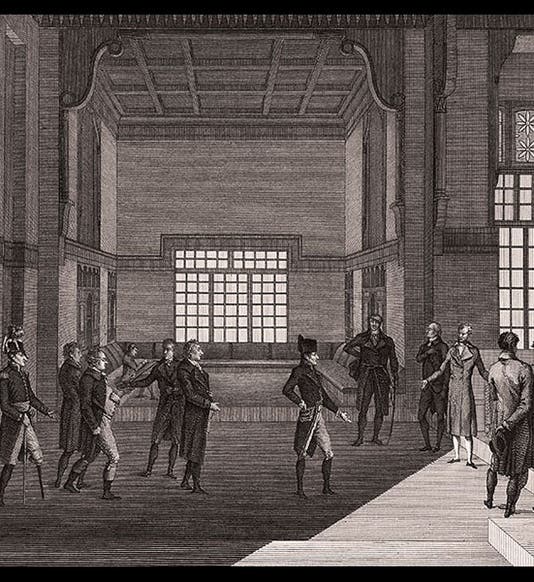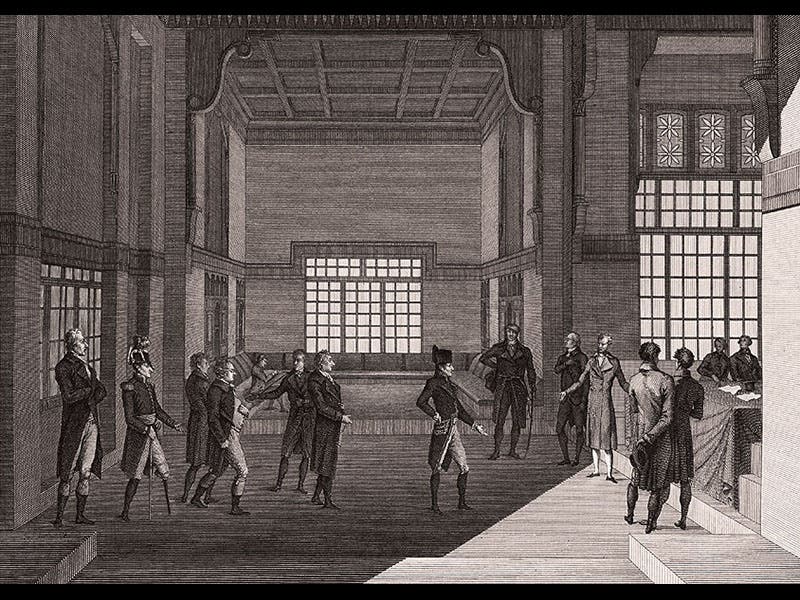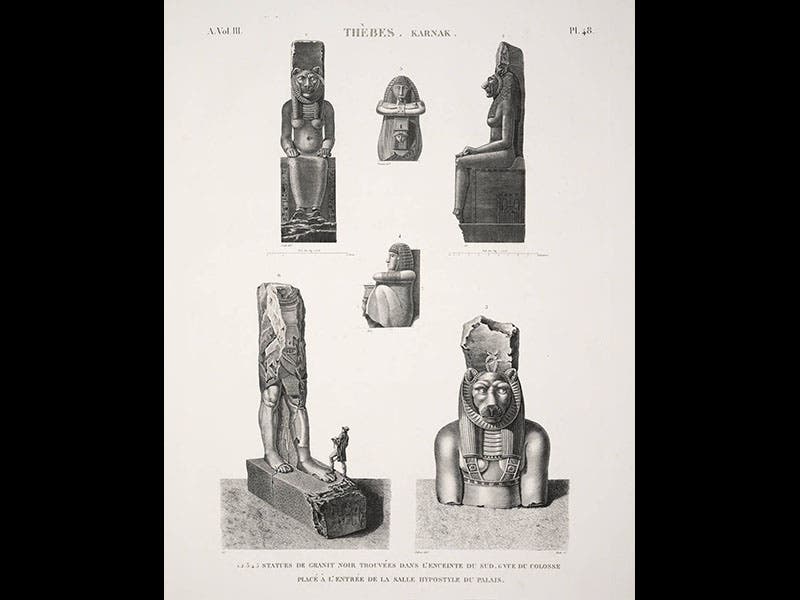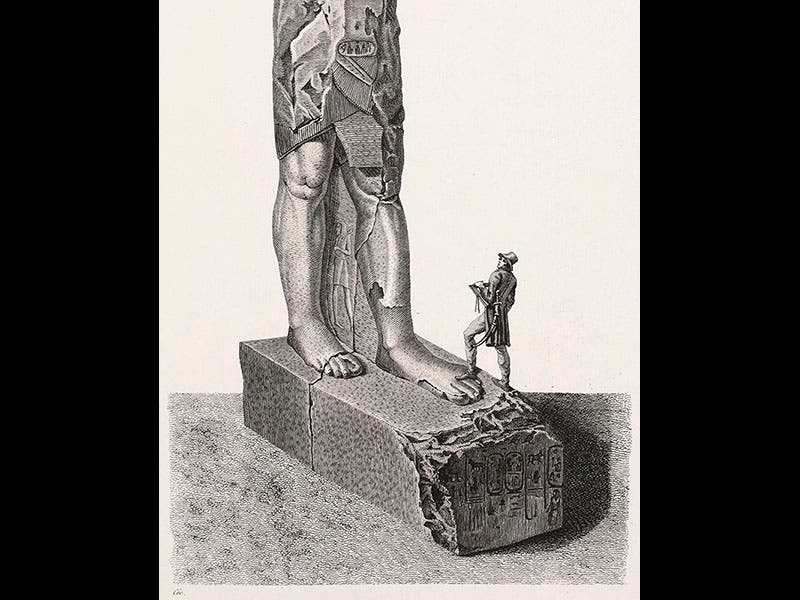Scientist of the Day - Jean Protain
Jean Constantin Protain, a French architect and artist, was born Jan. 6, 1769. Protain was one of the 151 savants—engineers, artists, naturalists—who accompanied Napoleon on his invasion of Egypt in 1798. After Napoleon and his troops had reached Cairo and won the Battle of the Pyramids, Napoleon authorized the establishment of the Institute of Egypt, founded in emulation of the Institute of France and intended to provide a home for his scientists. Protain made a drawing of the first meeting of the Institute, in the harem room of a commandeered house belonging to a vanquished Mamluk leader (see first image above). This image would later be printed in one of the volumes of the Description de l’Egypte (1809-28) and is one of the most best-known visual records of Napoleon’s scientific expedition, since all of the members present can be identified. Protain drew himself into the picture, sitting in the rear with his sketch pad. We know this is Protain, because another expedition artist, André Duterte, made sketches of each of the savants, and Protain is the only one who wore glasses (second image).
We have a second image of Protain at work in Egypt, made by another expedition artist and engineer, François-Charles Cécile. It is a figure at the bottom left of a large plate showing some fragments of colossi found at Karnak (third image); in a detail (fourth image), we can clearly recognize Protain, with his eyewear. We featured the artist, Cécile, in a Scientist-of-the-Day feature last fall.
Napoleon returned to Paris in 1799, leaving the troops under the command of General Kleber. On June 14, 1800, Kleber was walking through Cairo with Protain at his side when Kleber was attacked by a knife-wielding Syrian; Kleber was killed in the attack, and Protain was stabbed several times and seriously wounded, but he survived to live out a reasonably long life.
We displayed Protain’s depiction of the first meeting of the Institute of Egypt in our 2006 exhibition, Napoleon and the Scientific Expedition to Egypt, where many of the scientists are identified.
Dr. William B. Ashworth, Jr., Consultant for the History of Science, Linda Hall Library and Associate Professor, Department of History, University of Missouri-Kansas City. Comments or corrections are welcome; please direct to ashworthw@umkc.edu.







![“Aurora Borealis,” hand-colored wood engraving by Josiah Wood Whymper, [Natural Phenomena], plate 2, 1846 (Linda Hall Library)](https://assets-us-01.kc-usercontent.com:443/9dd25524-761a-000d-d79f-86a5086d4774/0245ffcb-b70c-477c-8792-0a73ebd54eb2/Whymper%2011.jpg?w=210&h=210&auto=format&fit=crop)


